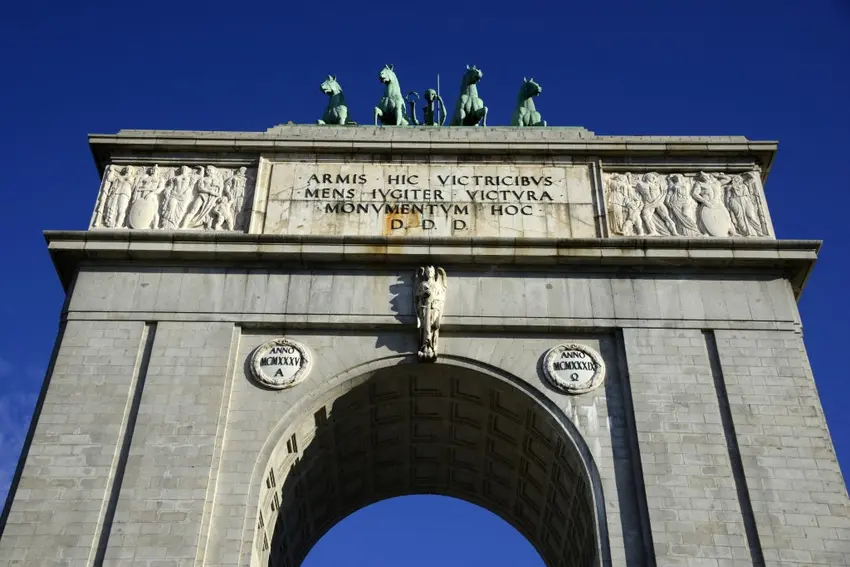News Flash
News Flash

MADRID, Oct 22, 2025 (BSS/AFP) - Spain's leftist government said Wednesday it
will publish a list of symbols of General Francisco Franco's dictatorship to
be removed from public spaces, 50 years after his death.
Franco's legacy remains a sensitive topic after he overthrew a democratic
republic in a brutal civil war that claimed hundreds of thousands of lives
and ruled with an iron fist from 1939 until his death in November 1975.
Socialist Prime Minister Pedro Sanchez told parliament that before the end of
November, his government will publish "a complete list of Francoist symbols
and elements, so they can finally be removed from our country and from our
streets".
From imposing neoclassical arches to quiet plazas named after regime
loyalists, remnants of Franco's nearly four-decade rule are still etched into
Spain's public landscape.
Campaign group Deberia Desaparecer ("It Should Disappear"), created in 2022
to track what it calls illegal vestiges of the rightist dictatorship, says
there are more than 6,000 such symbols still standing.
One of the most prominent is Madrid's 50-metre (164-foot) tall Victory Arch,
built in the 1950s on a busy roundabout to celebrate the victory of Franco's
fascist-backed nationalists in the 1936-1939 civil war.
After Franco's death, Spain underwent a transition to democracy.
But a sweeping amnesty law passed by parliament in 1977 shielded both former
regime officials and anti-Franco activists from prosecution.
Many symbols of the dictatorship remained untouched.
- Franco's remains relocated -
Efforts to reckon with the past have gained traction in recent decades.
In 2007, then-Socialist prime minister Jose Luis Rodriguez Zapatero
introduced the "Historical Memory Law", requiring public institutions to
remove Francoist iconography from public spaces.
That momentum gathered pace in 2018 when Sanchez took office.
The following year, his government exhumed Franco's remains from a vast
underground basilica near Madrid and relocated them to a more discreet family
vault to prevent his tomb from becoming a shrine for far-right supporters.
In 2022, a new "Democratic Memory Law" was introduced to honour victims of
the dictatorship and pressure local governments to eliminate regime symbols.
In response, crosses honouring Francoist soldiers have been removed in the
northwestern region of Galicia and the Canary Islands, and the northern city
of Santander has renamed 18 streets tied to the regime.
But efforts to remove the symbols have run into resistance, especially in
regions governed by the right.
- Hesitations and divisions -
The conservative opposition Popular Party (PP), born in 1989 as the successor
to a formation founded by a former Franco minister, has accused the
government of trying to stoke division among Spaniards.
It has vowed to repeal the "Democratic Memory Law" if it returns to power.
Some historians, too, are uneasy with the push to erase symbols. They argue
for a more nuanced, educational approach.
Daniel Rico, an art history professor at the Autonomous University of
Barcelona and author of "Who's Afraid of Francisco Franco?", has called for
installing plaques that explain the history of a symbol rather than scrubbing
them from public view.
"Covering up the remains of a painful past isn't the best way to process or
understand it," he told AFP earlier this year.
The government has announced around 100 events in 2025 to commemorate the
half-century since Franco's death and the start of the European country's
transition to democracy.
One in five Spaniards, 21.3 percent, consider the Franco dictatorship "good"
or "very good" for Spain, according to a survey published earlier this month
by state polling body CIS.
The majority, 65.5 percent, feel the dictatorship was "bad" or "very bad".
The perception of the dictatorship changes depending on the voter's political
affiliation, with those on the right more likely to have a positive view.